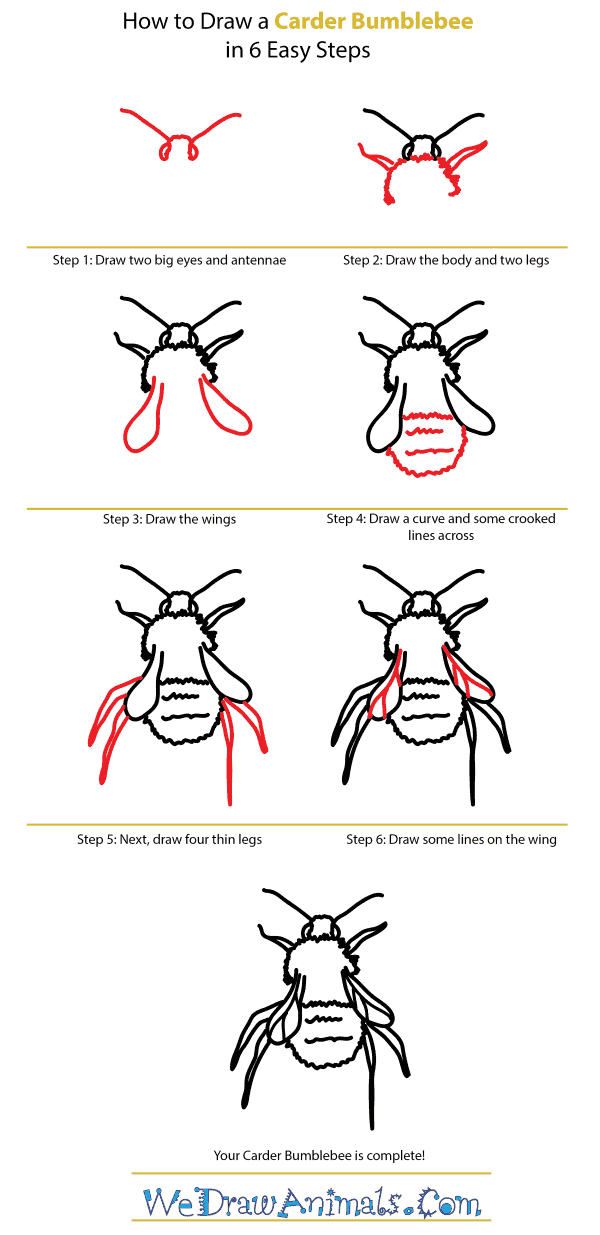In this quick tutorial you'll learn how to draw a Carder Bumblebee in 6 easy steps - great for kids and novice artists.
The images above represent how your finished drawing is going to look and the steps involved.
Below are the individual steps - you can click on each one for a High Resolution printable PDF version.
At the bottom you can read some interesting facts about the Carder Bumblebee.
Make sure you also check out any of the hundreds of drawing tutorials grouped by category.
How to Draw a Carder Bumblebee - Step-by-Step Tutorial
Step 1: Start out with two eyes and the antennae
Step 2: Underneath, draw a squiggley half circle for the body and a leg on either side
Step 3: Draw the wings at the edge of each circle
Step 4: Finish the body with another squiggley circle. Add lines across it for definition
Step 5: Draw the back legs, two on each side of the lower body
Step 6: Add the veins into the wings
Interesting Facts about the Carder Bumblebee
This species of bumblebee is common throughout most of Europe, and can occur anywhere that is accessible at all to the outdoors. Their variety in habitats leads them to garbage dumping grounds to flowery meadows and pastures indiscriminately. When an area is being looked at by a Queen for investigation as a potential nesting spot, they will appear at a site between April and October, flying low over the ground as if surveying it. She will analyze the land for small, dark places where a nest can be made and likely be safe from predators. She will collect moss and grass to form a hollow bowl that is bonded together with wax. It becomes filled with pollen, and then five to fifteen eggs are deposited inside of it. Beside this nest, the Queen will then make another bowl that is filled with nectar, which will serve as an emergency food supply. After five days, the larvae hatch, and then reach full maturity after a single week. Drone bees come from unfertilized eggs.
Did you know?
- The peak population size of a nest is somewhere between sixty and one hundred and fifty bees.
- During winter, they will fly off to find a safe hibernation spot. It is unlikely that all of a colony will survive this long.
- The carder bumblebee feeds on a variety of sources, including flowers, fruit and cabbage. Because they feed off of some harvested crops, they can be seen as a mild pest.
- Worker female bees lack the ability to reproduce.
- Their heads are very long, with longer snouts than other bumblebees. This helps them to easily collect nectar and pollen from flowers.
The Queens of this species are the longest of all carder bees, reaching up to eighteen millimeters in length. Worker females can only grow up to fifteen millimeters, and males up to fourteen millimeters. Their thoraxes are not just yellow and black like might be expected for a bee, but actually a yellowish-red with accents of grey throughout their bodies.







